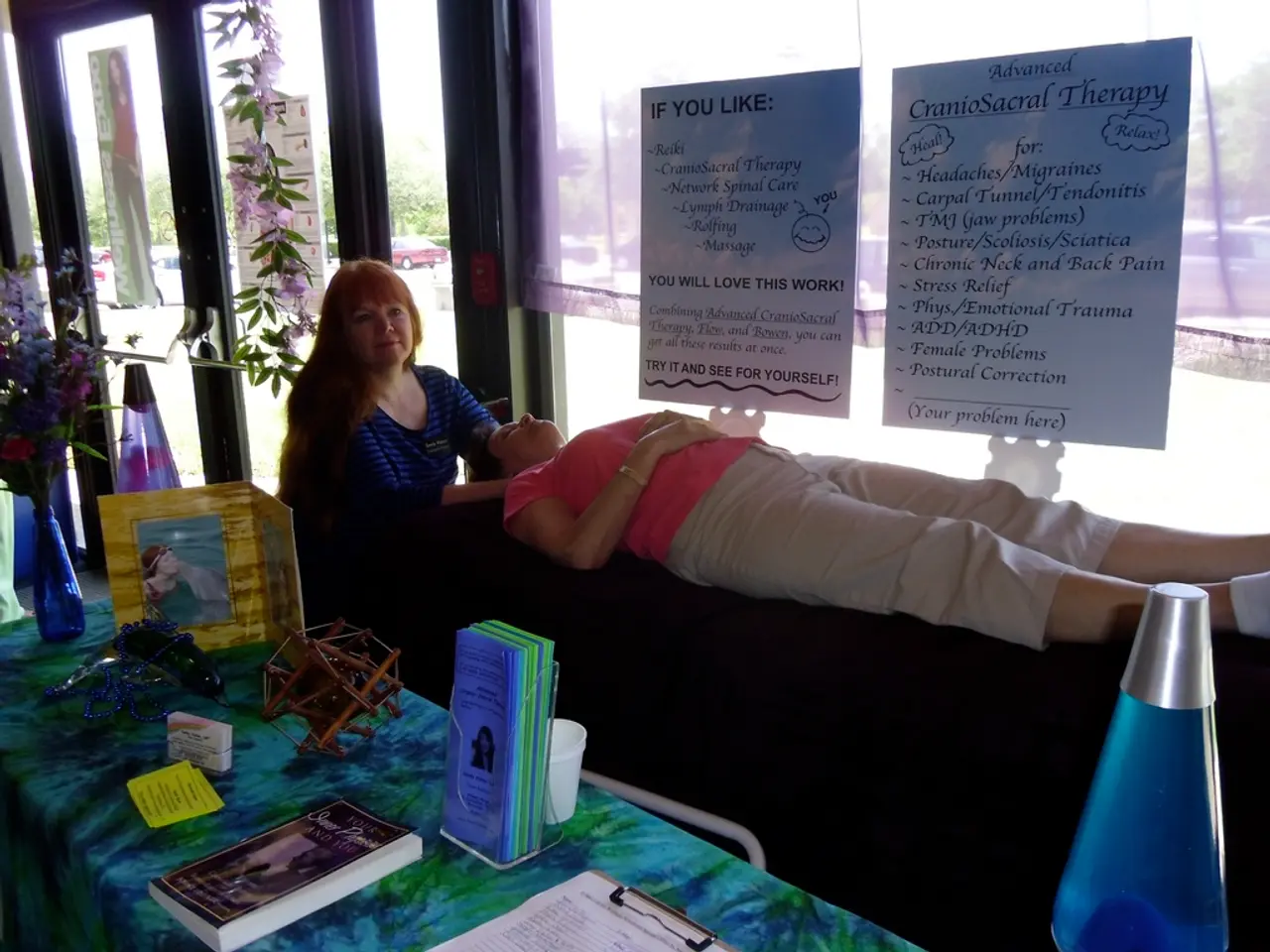Scar Tissue Discomfort: An Examination of Its Sensations, Causes, and Remedies
Internal scar tissue pain and fibrosis can significantly impact mobility and quality of life. Fortunately, a range of evidence-based treatments are available to manage this condition effectively.
One approach focuses on manual physical therapies, such as the Stecco method and the Graston Technique. The Stecco method employs deep friction and fascia manipulation to mechanically break up scar tissue and release adhesions, providing immediate pain relief after a session. The Graston Technique, an instrument-assisted soft tissue mobilization, uses stainless steel tools to detect and break down scar tissue in muscles, tendons, and ligaments, helping alleviate chronic pain and improve mobility.
Shockwave therapies, such as radial extracorporeal shockwave therapy (ESWT) and SoftWave Therapy, also play a crucial role in managing internal scar tissue pain. ESWT helps loosen fascia and stimulates new blood vessel growth, improving tissue mobility and pain, particularly effective for superficial scar types like keloids. SoftWave Therapy, on the other hand, delivers broad-focused shockwaves that penetrate deeper tissues, promoting regeneration of scarred muscle and connective tissue, leading to sustained pain relief and improved function.
Electro-Acupressure Therapy is another non-invasive, drug-free treatment that reduces both the physical and emotional pain of scarring, improves scar appearance and mobility, and releases tension in scarred areas.
Injection therapies, including corticosteroids, dextrose, or hyaluronic acid, can help normalize fascial tissue and break up adhesions. These procedures should be ultrasound-guided to avoid damage to nerves or vessels and to precisely target scar tissue.
These treatments are often used in combination for best outcomes, tailored to the scar location, depth, and the patient’s condition. Consulting with professionals trained in these modalities can ensure safe and effective management of internal scar tissue pain and fibrosis.
Signs of a mature scar include lighter colour, less sensitivity, and smoother texture. Scar tissue, a part of the body's natural response to damage, can lead to adhesions, ongoing pain, inflammation, and loss of function in the tissue or joint if fibrosis occurs. Scar tissue maturation can take up to 2 years.
Other symptoms associated with scar tissue include itching, swelling, and tenderness or sensitivity. Treatment options for scar tissue pain include exercise, moisturizing, and various medical treatments. Scar tissue pain may occur years after an injury or surgery.
It is important to learn more about scars to understand their impact and potential treatments. Scar tissue has a structure different from skin tissue, with collagen proteins growing in a single direction, making it less elastic. Scar tissue may cause pain due to skin tightness, nerve damage, fibrosis, or excessive growth of scar tissue.
In conclusion, a variety of effective treatments are available for managing internal scar tissue pain and fibrosis. By understanding the nature of scars and the available treatment options, individuals can take active steps towards improving their quality of life and managing their condition effectively.
- In certain cases, facial cosmetic surgery may result in scars that require management, especially when fibrosis occurs, affecting mobility and quality of life.
- COPD, diabetes, bipolar disorder, depression, and even Alzheimer's disease are mental and physical health conditions that individuals may simultaneously experience alongside scar tissue pain and fibrosis.
- Psoriatic arthritis, NSCLC (Non-Small Cell Lung Cancer), and obesity are health-and-wellness issues that may contribute to accidental falls, which can lead to additional scars and subsequent pain.
- AQ (Autosomal-Recessive Cutis Laxa), a rare genetic disorder causing skin laxity and thinning, can also result in scars requiring treatment and therapies-and-treatments for associated pain.
- Moisturizers can help manage dryness and improve the appearance of scars, maintaining a healthy and youthful skin-care regimen.
- Predictive science can help identify scar tissue types, maturity, and variations, allowing healthcare professionals to develop personalized treatment plans for each patient.
- In addition to physical therapies, depression may necessitate psychological therapies and mental-health interventions to cope with the emotional impacts of living with scars and pain.
- It's essential to recognize scar tissue symptoms such as itching, swelling, and tenderness, as these may indicate ongoing pain and potential complications like fibrosis.
- Type 2 diabetes, obesity, and pain arthritis may increase the risk of accidental falls; therefore, learning about scar tissue prevention and management contributes to overall health-and-wellness.
- Modern science has provided several evidence-based treatments for managing internal scar tissue pain and fibrosis, ensuring a better quality of life for individuals with these conditions.
- Incorporating exercise, proper nutrition, and stress-management techniques into one's health-and-wellness routine can support the healing process and minimize scar tissue complications.




